Deir el-Bahari: Temple of Hatshepsut (Egypt)
At the time of writing, the Deir el-Bahari team has already closed the next season in the field, having continued projects and tasks in progress from the previous season. Reported here is the campaign starting in end 2005 and running through the first quarter of 2006. Dr. Zbigniew Szafrański in charge of this team has accomplished the thankless task of balancing his obligations as head of the mission with his duties as Deputy Director of the Polish Centre in Cairo. This led to some shuttling there and back on his part, leaving Egyptologist Dr. Mirosław Barwik and architect Teresa Kaczor temporarily in charge of the work.
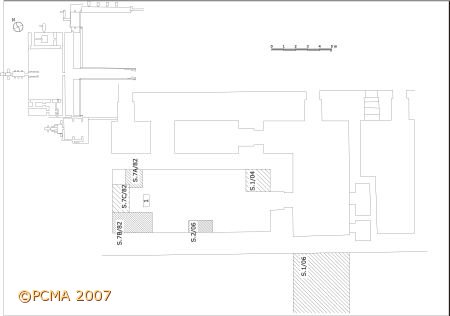
The conservation and reconstruction side of the project in the 2005/2006 season had concentrated on completing the work in the North Hall of Amon-Re, leaving the South Hall for the season which is now in progress. The two chambers should then be open for visiting. Several decorated ancient blocks coming from excavations inside the temple have also been preserved in preparation for their restoration in original positions. Stone restorers accomplished the restoration of a sandstone statue of Amenhotep I discovered more than 20 years ago in Assasif. A part of the face is still missing but the fragments are fortunately preserved and are right now in the process of being restored.
Final steps have also been made in completing a theoretical reconstruction of the east wall of the courtyard of the Chapel of Tuthmosis I. The wall can be studied on the computer screen for now, but fieldwork on its building restoration should start soon.
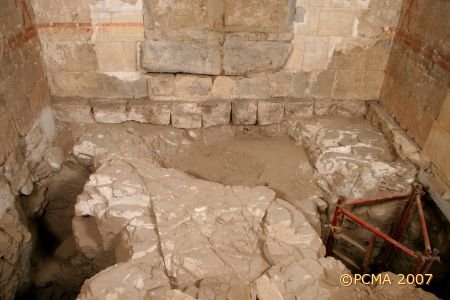
For the past few seasons the mission has concentrated on a study of the Hatshepsut Chapel in the Royal Mortuary Cult Complex. Two more of the burial shafts discovered inside the chapel were explored in the previous season, disclosing unstable wall foundations which demanded immediate structural work to protect the walls. The burials belonged to members of the royal family from the Third Intermediate Period, at which time the Upper Terrace was one grand royal cemetery (five shafts have been explored and there are at least three more to be excavated). Fragments of a sarcophagus and cartonnage, as well as bandages belonging to the vizier Pa-di-amonet were discovered, indicating that this nobleman must have been buried in one of the shaft tombs by the west wall (S.7c/82).
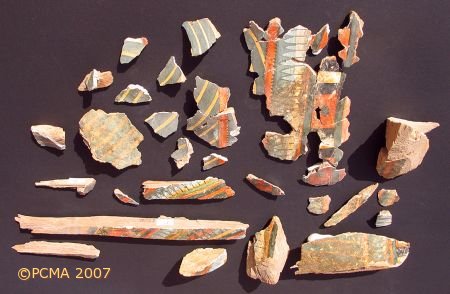
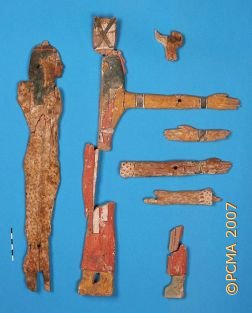
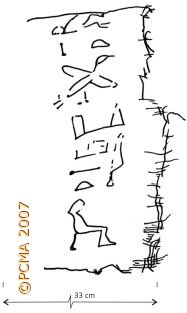
A test pit was dug by outer façade of the south wall of the Royal Cult complex. The choice of place for this trench proved very fortuitous because it turned out that the stratigraphy here had never been disturbed, not even by the archaeologist’s spade. Thus, the trench provided insight into the first stages of the building of the Hatshepsut temple. Hieratic inscriptions on the wall tell of methods of construction, as well as of the less material aspects of the work, like organization of labor and delivery of building materials.
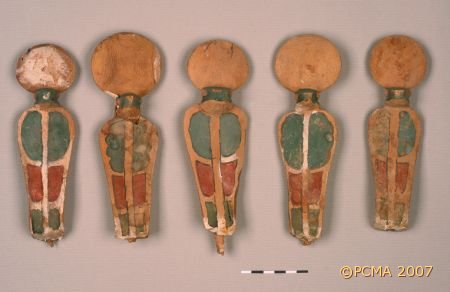
As in every season, documentation was a laborious part of the team’s effort. Documentalists have been working on completing the recording of parts of the Temple, particularly the Royal Mortuary Cult Complex, which is being prepared for publication, and the Festival Courtyard (northern part of the east wall and north wall), which is the object of a PhD study by Jadwiga Iwaszczuk. The focus of in-depth studies, however, is the archaeological, architectural and epigraphic material that will permit a reconstruction of the history of the temple and its role as a burial ground during the Third Intermediate Period. The Solar Cult Complex, where reconstruction work has come to a finish, was also the object of some verification and further studies, completing work on a volume devoted to its architecture and archaeology (PhD dissertation by architect Teresa Kaczor).
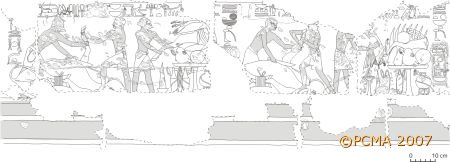
The Epigraphic Mission directed by Dr. Janusz Karkowski, working in association with Dr. Nathalie Beau of the IFAO in Cairo, continued in January and February with the recording of reliefs from the Chapel of Hatshepsut and revision of plates prepared for a forthcoming publication.
